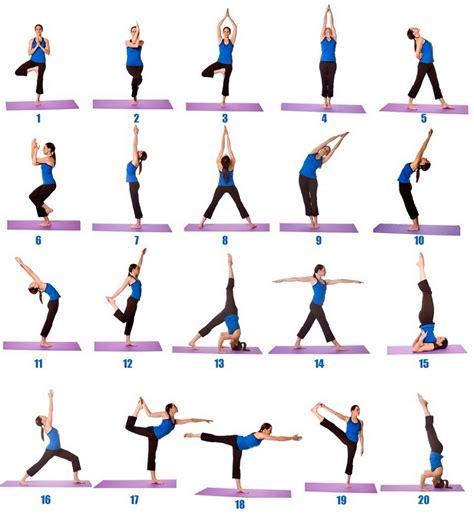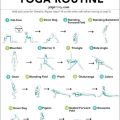Start Your Yoga Journey Today: A Comprehensive Beginner’s Guide
Yoga has long been heralded as a holistic practice that benefits both the mind and body. Whether you’re looking to improve flexibility, reduce stress, or embark on a wellness journey, yoga is an accessible way to integrate mindfulness and movement into your daily life. This guide will walk you through everything you need to know about starting yoga, from basic concepts to practical applications and beyond.
Introduction
Starting yoga can feel intimidating, especially with the wide range of styles, poses, and philosophies that come with it. However, understanding its core principles, historical context, and modern applications will demystify the process. By the end of this guide, you’ll be equipped to start your practice confidently and understand how to continue your growth over time.
Key Concepts
- Asanas – Physical postures and movements designed to improve strength and flexibility.
- Pranayama – Breathing techniques used to control life energy and calm the mind.
- Mindfulness – Focusing attention on the present moment, often through meditation practices integrated with yoga.
- Alignment – The way your body is positioned during yoga poses, which is essential for both safety and effectiveness.
- Drishti – A focused gaze or point of attention during a pose, used to improve concentration.
- Vinyasa – A sequence of poses linked with breath, creating a flow in movement.
- Chakras – Energy centers in the body that yoga aims to balance for physical and spiritual well-being.
- Savasana – A relaxation pose often done at the end of yoga sessions to integrate the practice.
Historical Context
Yoga dates back over 5,000 years and originated in ancient India as a spiritual and philosophical practice. It was initially developed as a way to transcend physical limitations and achieve higher states of consciousness. Over time, yoga has evolved from a mystical practice into a widely adopted physical and mental discipline, particularly in the West, where it often focuses on its physical and stress-relief benefits. The spread of yoga to Western countries can be largely credited to teachers like Swami Vivekananda and B.K.S. Iyengar, who introduced different styles and teachings to the global community.
Current State Analysis
In the modern world, yoga has transformed into a multi-billion-dollar industry with a wide range of styles and practices. From the fast-paced, fitness-oriented Power Yoga to the meditative Yin Yoga, there’s a yoga style for everyone. The rise of online platforms and apps has further made yoga accessible, allowing practitioners to learn from anywhere. Moreover, it is increasingly recognized for its mental health benefits, particularly in managing stress, anxiety, and depression.
| Yoga Style | Main Focus | Ideal For |
|---|---|---|
| Hatha Yoga | Foundational poses, slow and steady pace | Beginners looking to build a strong base |
| Vinyasa Yoga | Flowing sequences linked with breath | Those seeking a dynamic, cardio-focused practice |
| Iyengar Yoga | Precision in alignment, use of props | Individuals with injuries or mobility issues |
| Bikram Yoga | Set sequence of 26 poses in a heated room | Practitioners seeking detoxification and flexibility |
| Yin Yoga | Long-held, passive poses | Those looking to deepen flexibility and meditation |
Practical Applications
Yoga’s versatility is one of its strengths. You can incorporate yoga into your daily routine with little equipment, even in small spaces. Beginners often start with basic poses such as Mountain Pose (Tadasana), Downward-Facing Dog (Adho Mukha Svanasana), and Child’s Pose (Balasana). With time, practitioners may add more advanced poses like Warrior II (Virabhadrasana II) and Bridge Pose (Setu Bandhasana).
Case Studies
Here are some real-world examples of how yoga has positively impacted different individuals:
- A corporate executive used daily yoga to manage stress and prevent burnout, improving his productivity.
- A marathon runner incorporated yoga into her training, resulting in fewer injuries and better performance.
- A college student found yoga helped her cope with anxiety during exam periods, boosting both her mental clarity and focus.
- A retiree with chronic back pain regained mobility and reduced pain through a consistent Iyengar yoga practice.
Stakeholder Analysis
Understanding how yoga affects various stakeholders is essential for making informed decisions. These include:
- Health Professionals – Use yoga as a complementary practice for physical rehabilitation and mental health.
- Yoga Instructors – Aim to provide safe, effective classes that cater to a wide range of abilities.
- Yoga Studios – Play a key role in community building, offering space for collective practice.
- Employers – Implement corporate yoga programs to reduce stress and improve employee productivity.
- Governments – Promote yoga as a public health initiative, encouraging healthier populations.
Implementation Guidelines
If you’re new to yoga or setting up a program, here’s how to get started:
- Set Clear Goals – Understand whether your primary aim is flexibility, stress reduction, or general wellness.
- Start Small – Begin with simple poses and gradually introduce more complex sequences as your body adapts.
- Find the Right Instructor – Consider both online and in-person classes, but ensure that your instructor is certified and understands your specific needs.
- Create a Consistent Practice – Yoga’s benefits build over time, so aim for regular practice, even if it’s just 10-15 minutes a day.
- Use Props – Blocks, straps, and cushions can make poses more accessible and safer, particularly for beginners.
- Track Progress – Keep a journal of how your body and mind feel over time to assess improvement.
Ethical Considerations
While yoga offers many benefits, there are ethical considerations that practitioners should be aware of:
- Cultural Appropriation – Be mindful of yoga’s origins and the importance of respecting its cultural context.
- Inclusivity – Ensure that yoga spaces are welcoming to people of all backgrounds, body types, and abilities.
- Injury Prevention – Instructors must prioritize safety and alignment to avoid physical harm.
Limitations and Future Research
Although yoga has significant physical and mental benefits, it’s not a one-size-fits-all solution. Future research could explore:
- The long-term effects of specific styles of yoga on mental health conditions like PTSD and depression.
- How different populations—such as seniors, athletes, and children—benefit from customized yoga practices.
- The role of yoga in complementing traditional medicine, particularly in areas like pain management and chronic disease.
Expert Commentary
Experts in the field emphasize the importance of consistency and mindfulness when practicing yoga. According to Dr. Mary Richards, a renowned yoga therapist, “Yoga is not about achieving the perfect pose, but about understanding and respecting your body’s limitations while striving for mindful improvement.” Similarly, yoga teacher Rachel Scott advises, “The practice of yoga is a lifelong journey—there’s always more to learn, both physically and mentally.” These insights underscore the diversity and depth of the practice, affirming that yoga is accessible to everyone, regardless of experience or ability level.
Top 7 Mistakes to Avoid When Starting Yoga: A Beginner’s Guide
Yoga is a transformative practice that brings numerous physical, mental, and emotional benefits. However, beginners often fall into certain traps that can hinder their progress or even lead to injury. Whether you are new to yoga or returning after a long break, it’s important to start with the right knowledge and approach. In this article, we will explore seven common mistakes that yoga novices should avoid, ensuring a safe and rewarding experience.
Key Concepts
- Alignment: Correct posture and positioning in yoga poses to prevent injury and promote balance.
- Breath Control (Pranayama): The practice of regulating breath to enhance focus and relaxation.
- Mindfulness: Maintaining present-moment awareness during yoga practice.
- Progression: Gradual advancement in practice, respecting one’s own limits.
Historical Context
Yoga has a history spanning over 5,000 years, originating in ancient India. Initially, it was a practice aimed at spiritual enlightenment, and only over time did it evolve to include physical postures (asanas) as part of the practice. The modern yoga movement gained global popularity in the 20th century, emphasizing wellness, fitness, and stress relief.
Current State Analysis
Today, yoga is practiced worldwide, with a wide range of styles available, from the rigorous and fast-paced Ashtanga yoga to the meditative and gentle Yin yoga. However, as yoga has become mainstream, misconceptions have arisen, especially about what constitutes an effective and safe practice for beginners. Without proper guidance, novices may make critical errors that can derail their yoga journey.
7 Yoga Don’ts for Beginners
1. Don’t Skip the Warm-Up
Warming up is essential before jumping into more advanced poses. A proper warm-up prepares the muscles, joints, and mind for the practice ahead. Jumping straight into demanding poses can cause muscle strain or injury. Incorporating light stretches, joint rotations, and simple yoga postures helps avoid unnecessary pain and promotes a fluid session.
Example Warm-Up Routine:
- Cat-Cow Pose (Marjaryasana-Bitilasana)
- Child’s Pose (Balasana)
- Downward-Facing Dog (Adho Mukha Svanasana)
2. Don’t Overexert Yourself
Many beginners tend to push their limits in an attempt to master complex poses quickly. Yoga is not about perfection or competition. Overstretching or forcing a pose can lead to serious injury, especially in the joints and muscles. It’s vital to listen to your body and progress at your own pace.
| Signs of Overexertion | How to Adjust |
|---|---|
| Sharp Pain in Joints | Ease out of the pose; modify with props or a gentler variation. |
| Muscle Cramping | Stop, rest, and hydrate. Re-engage with more mindful breathing. |
| Loss of Breath | Pause and focus on Pranayama to re-establish breath control. |
3. Don’t Compare Yourself to Others
Each person’s body is unique, and yoga is an individual journey. One of the most common mistakes is to look at others in the class or on social media and strive to match their abilities. This mindset fosters frustration and can even lead to injury. Focus on your own practice, honoring where your body is at any given moment.
Key Mindset Shift:
Instead of aiming for perfection, seek personal improvement. Yoga is about becoming aware of your own progress, no matter how small.
4. Don’t Ignore Breathwork
Yoga is more than just physical postures. Breathwork (Pranayama) is integral to the practice, enhancing focus, balance, and relaxation. Beginners often hold their breath during difficult poses, which increases tension and reduces the effectiveness of the practice. Instead, cultivate a smooth, even breath to flow through your movements.
Pranayama Techniques:
- Ujjayi Breath: A slow, controlled breath that helps synchronize breath and movement.
- Nadi Shodhana: Alternate nostril breathing to promote balance and calm the mind.
5. Don’t Rush Progress
Progress in yoga takes time. Rushing through levels or pushing beyond what your body is ready for can lead to burnout or injury. Building strength and flexibility is a gradual process. Regular practice, combined with patience, will yield better results than forcing immediate breakthroughs.
Case Study: Building a Safe Headstand Practice
A beginner eager to achieve the headstand (Sirsasana) rushed into it without proper shoulder and core strength training. This led to neck strain and a prolonged recovery period. By incorporating preparatory poses like Dolphin Pose and forearm planks, the student eventually achieved the headstand safely after three months of patient practice.
6. Don’t Disregard Restorative Poses
Many newcomers to yoga focus solely on active, dynamic postures and neglect the importance of restorative poses. These gentle, relaxing poses—like Savasana (Corpse Pose) and Supta Baddha Konasana (Reclined Bound Angle Pose)—allow the body to recover and integrate the benefits of the practice.
Benefits of Restorative Yoga:
- Reduces muscle fatigue
- Promotes mental relaxation
- Balances the nervous system
7. Don’t Forget to Create a Consistent Practice
Consistency is key to reaping the long-term benefits of yoga. Sporadic practice may bring some immediate relaxation, but the profound physical and mental changes come with regular practice. Beginners should aim to practice 2-3 times a week to build a solid foundation, eventually increasing the frequency as they grow more comfortable.
Stakeholder Analysis
In the context of yoga, stakeholders include not just the practitioners themselves but also instructors, studio owners, health professionals, and wellness companies. Each has a vested interest in promoting safe, accessible, and effective yoga practices. Beginners, especially, benefit from well-informed guidance and appropriate adjustments based on their physical capabilities.
Implementation Guidelines
To ensure a safe and rewarding yoga journey, beginners should follow these key implementation guidelines:
- Start with beginner-friendly classes: Opt for classes labeled as “beginner” or “gentle” to build foundational skills.
- Use props: Yoga blocks, straps, and bolsters can aid in achieving proper alignment and reducing strain.
- Consult an instructor: Personalized feedback helps prevent bad habits from forming early on.
- Build a home practice: Consistency is easier to maintain with a mix of in-class and home practices.
Ethical Considerations
As yoga becomes more commercialized, the focus on holistic well-being sometimes shifts toward physical performance and appearance. It’s important for both teachers and students to remember that yoga’s ethical principles (such as non-harm and truthfulness) should guide the practice. Instructors must avoid pushing students beyond their limits and should foster an environment of acceptance and self-compassion.
Limitations and Future Research
Although yoga offers numerous benefits, further research is needed to quantify its long-term effects on different populations. Questions remain about how to optimize yoga for specific health conditions, including chronic pain and mental health disorders. Additionally, while modern yoga tends to focus on asanas, there is potential for deeper exploration of yoga’s spiritual and philosophical dimensions in beginner education.
Expert Commentary
Yoga experts agree that the key to a successful practice lies in the balance between effort and ease. The integration of mindfulness, proper alignment, and breath control can transform yoga from a simple exercise routine into a lifelong path to wellness. For beginners, the most important takeaway is that yoga is not a race—progress is built through patience, consistency, and self-compassion. When practiced with awareness, yoga can become a deeply personal and transformative journey.








